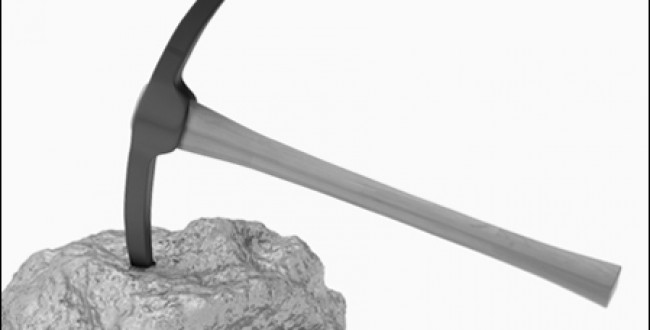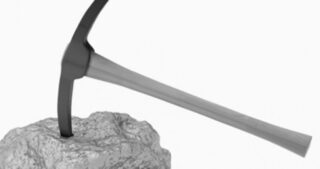Set mining is when you see a flop with a pocket pair hoping to flop a set. We'll explain how it works - and when it doesn't.

In the old days, holdem players would throw away any hand that didn't contain two high cards. "What's the point of playing if your hand is worse than the opponent's?"
Then creative players realized that hand strengths change as new cards come on the table, and that this can be exploited. A hand that is behind pre flop can be in front when three cards have been displayed.
Pay a little to win big
And at this stage the bets will be bigger. Seeing a flop is usually cheap, most of the time you get it at the cost of 1-3 big blinds. If you can improve your hand and win 10 or maybe 100 big blinds, well then it could be worth the investment.
This is called implied odds, and you should be familiar with the concept.
When you play a low pocket pair like 5-5 and don't improve on the flop, you'll have to fold it if an opponent turns up the heat.
On the other hand, when 5-5 turns into a set on the flop, it will often be in the lead (and hard for opponents to see.) You can play it hard and scoop a big pot.
Simple winning machine
This combination of either winning big pots or being an easy fold has made low pairs very popular. They're played with the intention of either hitting a set or folding.
It's called set mining, and it has popped up as one of the most profitable plays in today's holdem.
You definitely should put this device in your poker toolbox, but realize that it doesn't come without some limitations. The following factors decide how successful a set mining operation will be.
Implied odds
Your pocket pair will hit the flop twice in 15 trials. That is, the odds against it are around 7-to-1, and you need the corresponding odds from the pot.
If the pot doesn't give you 7-to-1 odds straight up (which is unusual pre flop,) there are always the implied odds to hope for, which we mentioned above.
But to have any implied odds, your opponent must be willing to pay off your winning hand. The implied odds cannot be calculated exactly, it depends on a number of things, like the stack sizes involved and what kind of player your opponent is.
On the other hand, you'll sometimes be able to pick up the pot even without a set. Calling a pre flop raise is a strong move as such, and if you have position on the raiser he'll often just have two unimproved high cards and check the action to you on the flop.
Effective stack size
If your opponent doesn't have any chips left in her stack, how could she pay off your winning hand? Before you make a play that is based on implied odds, check if there are any chips left to win if you hit your hand.
This thumb rule takes account of the stack size:
"If you can win more than 20 times the current bet, call. If you cannot win more than 10 times, fold. If in between, continue the analysis."
You also need to realize that you cannot win more from your opponent than you have in your own stack. It's the smallest stack involved that sets the limit.
This is called "effective stack size". The odds you look at if you win the opponent's whole stack or double up your own is called "stack odds".
Type of opponent
Also you need to ask if this particular opponent will call a big bet with an unimproved overpair (or even more, with two high cards). You can't know that, but you need to develop a feeling for it.
If the answer is "no" or "probably not", you may not have the implied odds that are necessary to make your set mining profitable. This is one reason why an effective stack of 8 times the current bet isn't good enough, as we stated above.
Note: The better start hand the opponent has, the harder it is for him to fold it. An opponent's pre flop strength increases your implied odds.
If a player raises pre flop with T4 and you put him all in on a flop of T53, he may not pay you off. On the other hand, a player who raised with AA just might.
So when you're set mining, look for strong pre flop raises. This may go against your intuition, in which case you need to actively overrule it.
Today, since set mining has become so popular, good players are becoming less and less willing to go all the way with just an overpair or top pair. The more this happens, the less profitable set mining gets. You could say that the uprising trend is cutting off its own head.
The dynamics of poker never stop working. You need to know the present state of affairs, for example by following the discussions in the poker forums.
Risk of higher sets
Of course, once in a while your flopped set will not be the best hand. The lower your set is, the more often the flop will contain over cards to your set. For each such over card, there's a chance that an opponent has flopped a higher set.
This won't happen a lot, but when it happens it's very hard not to lose a big pot. This is another reason why you need extra odds to give the set mining play long term profitability.
Go digging.
/Charlie River











